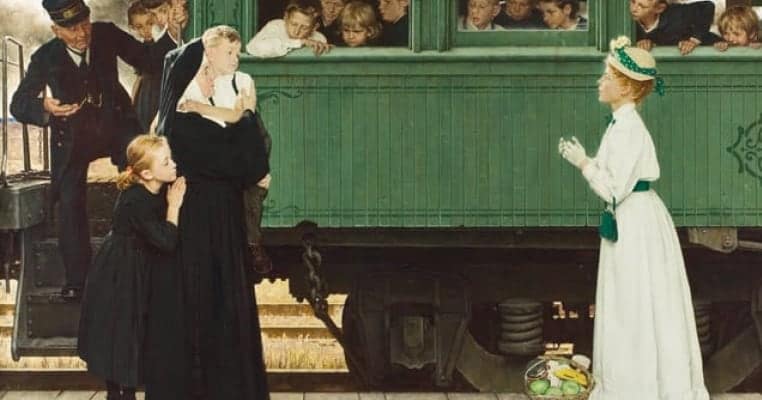Adoption, as we think of it today, has changed drastically over time. So has the meaning behind the phrase “putting a child up for adoption.” And we have reason to be glad for this because this phrase belies a sad truth. Nowadays, expectant parents choose their baby’s adoptive parents. Careful plans are made by their birth families and “open” adoptions, which allow children to keep in contact with their birth families aren’t unusual. It’s a distant cry from the childhood adoptions of the mid-1800s when children were auctioned like cattle by families who usually hoped to use them for hard labor.
Children were forced onto orphan trains and shuttled to one city after another where they were “put up” on stages or tall stumps at auctions. Here, they were forced to perform and were inspected by prospective adoptive families. The history of these orphan trains spans from the mid-1800s to the early 1900s, a time when cities were bulging with orphaned children. In New York City, circa 1850, there were 30,000 homeless, abused, abandoned and orphaned kids. Children wound up in these tragic circumstances because their parents were too poor, or were drug addicted, or because of the nasty illnesses that were common in the U.S. at this time.

Philanthropist Charles Loring Brace knew he had to do something to help these youngsters, some of whom had turned to crime in order to stay alive. Brace had founded the Children’s Aid Society, and he was full of ideas. But central to this was the idea that children need a stable family. He also believed hard labor was essential for their well-being. But by trying to provide better lives for the children and reduce the circle of theft and violence in cities, he adopted ideas that were draconian.

Brace was born to a prosperous New England family in 1826. At the time his father John Brace was the principal of Litchfield Academy. In 1832 young Charles moved with his family to Hartford, Connecticut, where his father directed a female seminary and later became an editor for the Hartford Courant. Homeschooled by his father until he entered Yale University, Brace taught for a year before enrolling in the Yale Divinity School. Additionally, he studied at the Union Theological Seminary in New York City and was ordained as a Congregational minister in 1849.
The young man travelled with friends through Europe in 1850 and 1851 and spent this time learning about philanthropic and correctional institutions. After marrying Leticia Neal in 1854, Brace felt drawn to missionary work. Soon after, he took a position as a Methodist Minister and was director of the Five Points Mission. The mission was located in one of New York City’s poorest neighborhoods.

